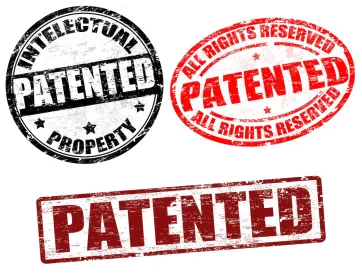In its 2018 decision in Helsinn Healthcare S.A. v. Teva Pharmaceuticals USA, Inc., the Supreme Court held that an inventor’s sale of an invention to a third party who is obligated to keep the invention confidential can create an on-sale bar under AIA §102(a). Relying on Helsinn, the ITC’s ALJ Cheney has held, in In re Certain High-Potency Sweeteners (Inv. No. 337-TA-1264) — as a matter of first impression — that a patentee’s sale of an unpatented product made with a secret process can create an on-sale bar to the patentability of the process.
In re Certain High-Potency Sweeteners was initiated by Celanese International Corporation (“Celanese”) against more than 20 respondents, including Anhui Jinhe Industrial Co., Ltd. and Jinhe USA LLC (collectively “Jinhe”). The patents asserted in the investigation claim improvements to a conventional process for making acesulfame potassium (Ace-K) — an artificial sweetener used in foods, drinks, and medicines. During prosecution of the asserted patents, Celanese admitted that the claimed process had been in use, in secret, in Europe and that products made from the claimed process were sold in the United States more than one year before the priority date. Citing Celanese’s admission, Jinhe filed a motion for summary determination of no violation based on the contention that all patent claims asserted in the investigation were invalid because Celanese sold products made with the patented process more than a year before the effective filing date of the patents, thus creating an on-sale bar under 35 U.S.C. § 102(a)(1). On January 11, 2022, ALJ Cheney issued an Initial Determination granting Jinhe’s motion.
The issue at the heart of ALJ Cheney’s decision was whether the Leahy-Smith America Invents Act’s (AIA) amendments to the on-sale bar in 35 U.S.C. §102 modified pre-AIA law regarding the sale of products made with a secret process. Under the pre-AIA law, a patentee’s sale of an unpatented product made with a secret process can create an on-sale bar to the patentability of the process. There was no dispute that if the asserted patents were pre-AIA patents, Celanese’s prior sales of Ace-K made with its secret process would have created an on-sale bar to the patentability of the process. But the asserted patents have a priority date after the effective date of the AIA, so the AIA version of the §102 on-sale bar applies. There has been no adjudication of this aspect of the on-sale bar under the AIA, thus creating a case of first impression.
The pre-AIA version of the §102 on-sale bar stated that a person shall be entitled to a patent unless “(b) the invention was patented or described in a printed publication in this or a foreign country or in public use or on sale in this country, more than one year prior to the date of the application for patent in the United States.” 35 U.S.C. § 102(b) (pre-AIA). The AIA version of the §102 on-sale bar states that a person shall be entitled to a patent unless “(1) the claimed invention was patented, described in a printed publication, or in public use, on sale, or otherwise available to the public before the effective filing date of the claimed invention.” 35 U.S.C. § 102(a)(1) (AIA)(emphasis added).
In Helsinn, the Supreme Court addressed the issue of whether, under the AIA, an inventor’s sale of an invention to a third party who is obligated to keep the invention confidential qualifies as prior art for purposes of the on-sale bar. The court in Helsinn concluded that Congress intended to adopt the earlier judicial interpretation of “on-sale” and held that an inventor’s sale of an invention to a third party who is obligated to keep the invention confidential can create an on-sale bar under AIA §102(a).
In the current case, Celanese, citing textual changes to the AIA version of §102, argued that Helsinn relates only to what it means to be “on-sale” and does not address other aspects of the on-sale bar. Celanese noted that in contrast to Helsinn, where the patent claims were directed to a “product” that was the subject of the secret sale, the claims in the present case were directed to a secret “process” and Celanese sold products made from the process. Celanese argued that when Congress changed the statute to add the word “claimed” as a modifier of “invention” and add the phrase “or otherwise available to the public,” Congress intended to change existing law and allow patent protection for a secret process, even if the patentee sold products made with that process prior to filing the patent application.
ALJ Cheney rejected Celanese’s arguments, noting that the AIA’s addition of the word “claimed” to modify “invention,” without further explanation, would not be an appropriate way to overturn an existing body of law. Further, citing the legislative history of the AIA, ALJ Cheney held that the Supreme Court’s Helsinn opinion, although not addressing this exact fact pattern, supported a conclusion that Congress’s enactment of the AIA did not overturn other long-established precedent relating to the on-sale bar, including whether a patentee’s sale of an unpatented product made with a secret process can create an on-sale bar to patentability of the process.
Take away
Manufacturing companies and chemical companies often must decide whether an invention related to a manufacturing or chemical process should be kept as a trade secret or be the subject of a patent application. Each type of intellectual property protection provides different advantages and disadvantages. Pre-AIA law prevented companies from trying to leverage the advantages of both types of protection – by maintaining an invention as a trade secret as long as possible, and then filing for patent protection in order to extend the protectable life of the invention. Here, Celanese argued that changes to the on-sale bar under the AIA overturned this law and allowed it to take advantage of both types of protection for the same invention, but ALJ Cheney rejected that argument, holding that the pre-AIA law still applied. Although this decision has not been confirmed by the Commission, and very likely will be appealed, it affirms the pre-AIA law, which forces companies to choose between trade secret and patent protection for their inventions.




 />i
/>i


